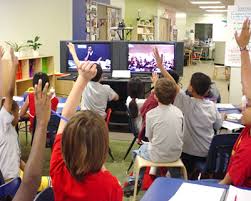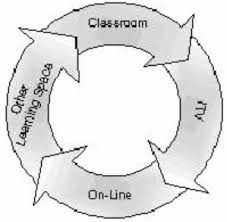Change in Student and Teacher Roles
When students are using technology as a tool or a support for communicating with others, they are in an active role rather than the passive role of recipient of information transmitted by a teacher, textbook, or broadcast. The student is actively making choices about how to generate, obtain, manipulate, or display information. Technology use allows many more students to be actively thinking about information, making choices, and executing skills than is typical in teacher-led lessons. Moreover, when technology is used as a tool to support students in performing authentic tasks, the students are in the position of defining their goals, making design decisions, and evaluating their progress.
The teacher's role changes as well. The teacher is no longer the center of attention as the dispenser of information, but rather plays the role of facilitator, setting project goals and providing guidelines and resources, moving from student to student or group to group, providing suggestions and support for student activity. As students work on their technology-supported products, the teacher rotates through the room, looking over shoulders, asking about the reasons for various design choices, and suggesting resources that might be used.

Why digital gaming, simulations, and social networking? Simply put, these technologies afford us the ability to
convey concepts in new ways that would otherwise not be possible, efficient, or effective, with other instructional
methods. In other words, these technologies don’t just help us teach the old stuff in new ways – they can also
help us teach new stuff in new ways.......







 <
<
